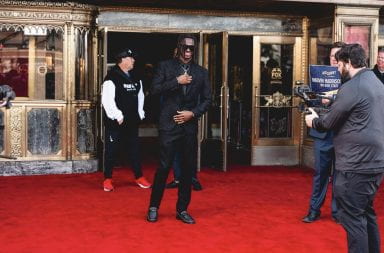Jake Mendel is the Director of Development for Pursuit, a men’s clothing store located in the South Campus Gateway.
One of the most confusing things men face is how to dress for specific occasions. If an invitation says business professional, what exactly does that mean? Knowing how to dress according to invitation standards is a skill that all aspiring young professionals should master, if not to at least save themselves from showing up embarrassingly over- or under-dressed. The three most common dress codes are formal, business professional and business casual and it’s important to know what each of these entails.
Formal will always be on the dressiest end of the spectrum. Anything that says formal or “black-tie” refers to events for which it’s difficult to overdress. For a formal occasion, you have two basic options.
The first is the tuxedo. Opt for a slim tuxedo, and go black with satin peak lapels for a clean, timeless look. In addition, make sure you get a tie-it-yourself bowtie for added flair. Do not wear a regular tie with a tuxedo. If you don’t own a tuxedo, it’s always better to buy one than to rent one.
If buying a tuxedo is simply not in your budget, opt for your second formal option: the black suit. A formal event is an appropriate venue to wear a black suit, as long as it’s dressed up. Adding a vest to the picture and therefore making that black suit a three-piece is an option to make the look more formal. Keep in mind this vest should be the same fabric as the suit, not a bright blue vest that you would have worn to prom. A clean white shirt and pocket square, and a textured black tie will have you fitting in perfectly with all of the guys in tuxedos. If an event specifically says “black-tie,” it’s pretty obvious that you shouldn’t show up wearing a different color tie.
The next type of event is the business-professional event. This can be anything from a conference to a job interview, and will be the most common dress code for work events. If an event is designated as business professional, you must wear a suit. In this case, even though black is appropriate, a navy, medium blue or charcoal suit will allow you to stand out while still dressing professionally. Opt for a shirt and tie in toned-down colors if you choose a bolder suit, or go for a bold shirt-and-tie combo when choosing a subtle suit. In business-professional events you need to stand out by making a statement, but remember to balance that statement with clothing choices on the other end of the spectrum. If an event is designated as semi-formal, treat it as you would a business-professional event.
The last type of dress code is business casual. This is common for summer weddings, networking events and more laid-back/social venues. For the case of business casual, wear something that would be appropriate for the office, but a little less dressy than you would wear to a formal interview. Your best option for business casual is pairing a blazer with a pair of chinos. The traditional combo is the navy blazer and khaki combo, but liven things up with a different color pant like maroon or light gray, or change up the jacket with a lighter blue or charcoal. The business casual look should reflect your personality as much as possible, but still be appropriate to wear to work. Experiment with using different patterned blazers, bright shirts or bold ties, and find a look that defines you.
Now that you’ve got the skills to dress for the occasion, apply them next time you get invited. If you need practice, pick a certain day of the week to dress up, and use the time to discover new looks that you can use for future unexpected events. With spring weddings, career fairs and graduation all coming in the next couple of weeks, you’ll find yourself reaching for your suit more often than ever, and it’s better to make your mistakes when you’re a young student than when you’ve finally made it into your first job.


